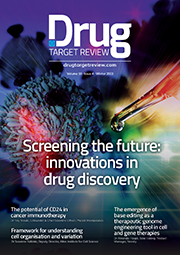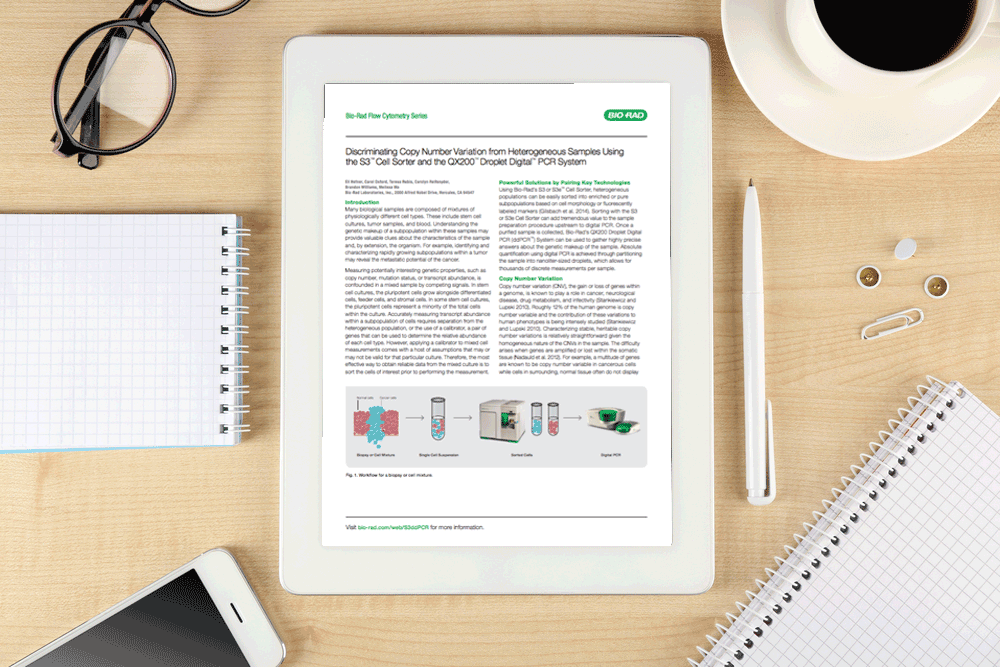Whitepaper: Discriminating copy number variation from heterogeneous samples using the S3™ Cell Sorter and the QX200™ Droplet Digital™ PCR System
Posted: 1 November 2016 | Bio-Rad Laboratories | No comments yet
By combining technologies such as flow cytometry, cell sorting, and digital PCR highly accurate and more specific results can be attributed to cell populations of interest vs. the bulk heterogeneous populations…
Many biological samples are composed of mixtures of physiologically different cell types. These include stem cell cultures, tumor samples, and blood.
Understanding the genetic makeup of a subpopulation within these samples may provide valuable clues about the characteristics of the sample and, by extension, the organism. For example, identifying and characterizing rapidly growing subpopulations within a tumor may reveal the metastatic potential of the cancer. Measuring potentially interesting genetic properties, such as copy number, mutation status, or transcript abundance, is confounded in a mixed sample by competing signals. In stem cell cultures, the pluripotent cells grow alongside differentiated cells, feeder cells, and stromal cells. In some stem cell cultures, the pluripotent cells represent a minority of the total cells within the culture. Accurately measuring transcript abundance within a subpopulation of cells requires separation from the heterogeneous population, or the use of a calibrator, a pair of genes that can be used to determine the relative abundance of each cell type. However, applying a calibrator to mixed cell measurements comes with a host of assumptions that may or may not be valid for that particular culture. Therefore, the most effective way to obtain reliable data from the mixed culture is to sort the cells of interest prior to performing the measurement.
This whitepaper is restricted - login or subscribe free to access


Why subscribe? Join our growing community of thousands of industry professionals and gain access to:
- quarterly issues in print and/or digital format
- case studies, whitepapers, webinars and industry-leading content
- breaking news and features
- our extensive online archive of thousands of articles and years of past issues
- ...And it's all free!
Click here to Subscribe today Login here
Related content from this organisation
- Bio-Rad introduces mixed-mode resin for biomolecule purification
- New insights into the role of viral capsids in gene therapy safety
- The essential role of recombinant phage display antibody libraries
- Optimised antibody panels for CTC and rare cell enumeration
- Developing next generation non-replicative HSV-1 vectors for sustainable and more precise gene therapies
Related topics
Stem Cells
Related organisations
Bio-Rad Laboratories









